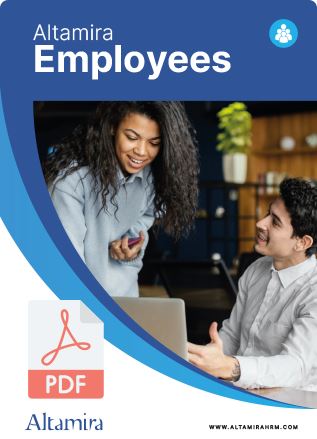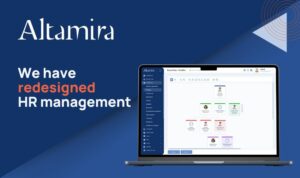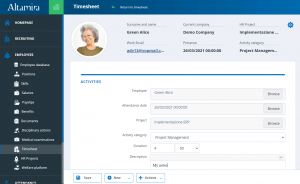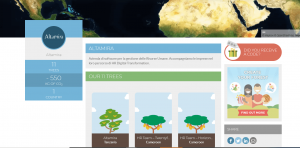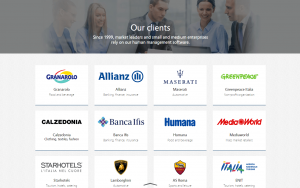Companies are facing an uphill battle in finding qualified candidates, with factors like rapidly evolving skill sets and a shrinking talent pool adding to the challenge. Even companies with strong brand recognition and top-notch employer branding strategies can’t afford to let potential hires slip through the cracks, especially when it comes to crucial roles.
Yet, despite meticulous job description crafting, using ATS multiposting to publish announcements on major search engines, and investments in sponsored listings across leading job boards and social platforms to drive traffic to their “Careers” page, many companies still struggle with a discouragingly high drop-off rate in the application process.
Numerous career sites and postings fail to effectively engage visitors, as they are plagued by inefficiencies and shortcomings.
Here’s a playbook to up your chances of snagging applicants for your open roles.
1. Optimize Your Career Site Structure
The larger your company’s number of open positions, the more likely a candidate will struggle to find the most suitable job posting.
Start by providing filters to narrow down searches—by department (marketing, customer service, admin, etc.) or location (especially critical in retail).
Additionally, consider creating dedicated pathways for key corporate roles right from your career site’s homepage so candidates can zero in on the open positions that interest them the most.
2. Streamline Application Forms
No candidate enjoys being bombarded with excessive questions, especially when they’ve already covered them in their resume.
Unless absolutely necessary, trimming down the number of fields to fill is always a good idea, using the company’s ATS to analyze the attached CV instead. The goal is to gather essential information for candidate identification and contact.
One of the most modern solutions to expedite the application process is resume parsing. This AI-driven tool meticulously sifts through the candidate’s resume, identifying key details and seamlessly populating the application form with essential information.
As a result, candidates are only tasked with attaching their CVs and ensuring that the system accurately completes all necessary fields.
3. Improve Your Career Site’s Responsiveness
In today’s mobile-driven world, where the majority of job searches occur on smartphones and tablets, ensuring your career site’s responsiveness is paramount and failure to do so risks alienating a significant portion of potential applicants.
Your site’s design should seamlessly adapt to various screen sizes and orientations, prioritizing easy interaction with appropriately sized text and buttons. A lean application form is an especially critical asset for those applying from smartphones.
4. Assist Candidate Searches
Your company’s careers page can be a goldmine of tools to assist candidates in finding their perfect role.
One of those, commonly known as the Job Matching tool and based on artificial intelligence, allows candidates to view open positions that best align with their profile through a preliminary CV analysis. Like resume parsing, the user simply needs to upload their resume for the system to return the most suitable listings.
Another invaluable tool, often AI-based, is the chatbot—a virtual assistant that guides candidates through the career site and provides additional company insights.
5. Provide the Right Motivation
A career site should offer more than just a rundown of available positions; it should feature a dedicated section on employer branding showcasing the company culture and all the perks of working there.
With support from the marketing team, you can create a variety of compelling content: think employee interviews, showcasing benefits, exploring company mission and vision, virtual office tours, and more. Dive into a wealth of articles, books, and courses on these topics to fuel your creativity and enhance your content strategy.
Here’s a helpful hint: strategically integrate “social proof” elements near the application submission button to boost users’ confidence in finishing the application process; employee satisfaction testimonials or high ratings on review sites like Glassdoor can work wonders!
6. Hire Based on Skills
Searching for personnel based on their skills rather than their titles can expand the pool of candidates who are a good fit for the position, thus boosting the application rate.
Many companies are beginning to understand that insisting on a specific degree or master’s in a particular discipline can be counterproductive. In reality, numerous potential candidates are often highly qualified but have acquired the necessary skills through alternative routes, such as work experience or personal passion.
Hiring based on skills also simplifies the onboarding process for new hires and guides them more effectively through internal evaluations.
7. Disclose the Expected Salary Range
According to a recent directive from the European Union, disclosing the expected salary for an open position will soon become mandatory. However, there are compelling reasons to start doing so right away.
Numerous studies have shown that including this information in a job ad increases the application rate and attracts candidates who are more aligned with the role, making salary negotiations smoother.
When disclosing the expected salary range, keep the gap between the minimum and maximum figures moderate to maintain effectiveness.
At Altamira, we’ve long been transparent about salary ranges in our job postings, yielding excellent results.
8. Embrace Inclusive Language
When crafting job postings, it’s essential to use neutral and inclusive language that resonates with all potential candidates.
It’s not just about avoiding gender-specific terms but about adopting expressions that respect cultural, gender, age, and ability differences.
Incorporating inclusive language not only paints the company as forward-thinking and inclusive but also broadens its reach, ensuring a more diverse audience feels represented and encouraged to engage.
Nevertheless, numerous job postings continue to include criteria that lack relevance to a person’s potential success in the role, tend to prioritize skills traditionally associated with male-dominated industries, or signal deeply rooted organizational issues. Take for instance the often-mentioned requirement of “stress resistance,” a concept rooted in outdated perceptions of work that may not align with the values and expectations of today’s workforce.
Conclusions
Capturing the attention of numerous potential candidates on your company’s job postings and career site is just the initial step in the selection process. Fine-tuning the conversion mechanism is vital to persuade users not to abandon the application process.
The same level of attention should be given to subsequent phases, including providing ongoing feedback to candidates, organizing a coherent series of video interviews and assessments, and conducting tests only when absolutely essential for selection purposes.
Ultimately, the selection process should culminate in a compelling job offer letter and an efficient onboarding process, ensuring the seamless integration of a motivated new asset into the company.
Applicant Tracking Systems like Altamira Recruiting support recruiters throughout these stages, enabling them to meticulously oversee every aspect of the recruitment and selection process and create a career site with a high conversion rate.
Copyright: ©Oleg/Adobe Stock


